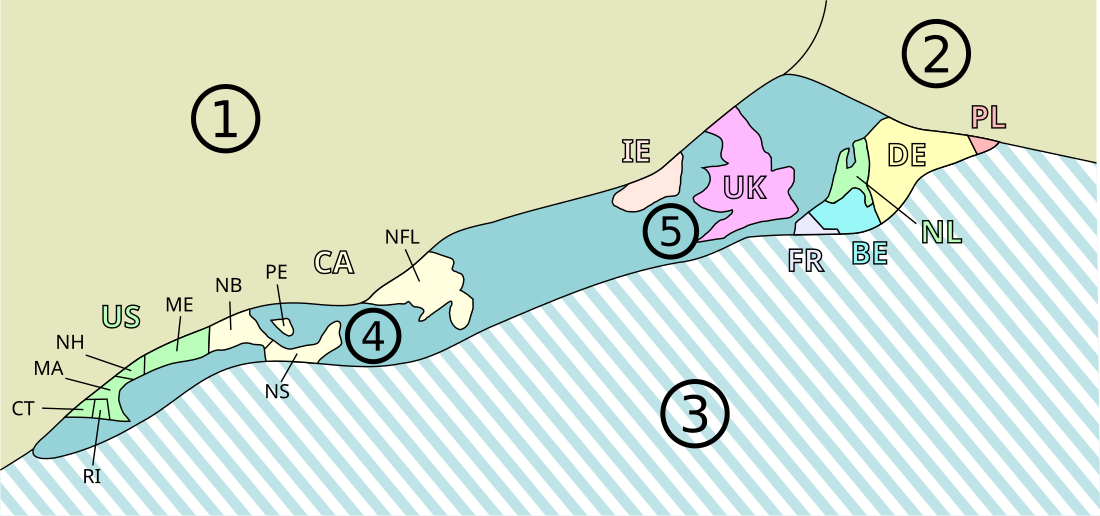Top Qs
Timeline
Chat
Perspective
Klerf Formation
Early Devonian formation with fossil Lagerstätte From Wikipedia, the free encyclopedia
Remove ads
The Klerf Formation is an Early Devonian (Emsian) formation that includes a Lagerstätte in the Northern Eifel hills, at Willwerath near Prüm, Rhineland-Palatinate, Germany. In it Jaekelopterus rhenaniae, a giant eurypterid was discovered. The Klerf Formation, comprising greenish and reddish shales, siltstones and sandstones, was first described in 1919 by Rudolf Richter (1881-1957) and reaches a maximum thickness of about 1,300 metres (4,300 ft).[1] It is part of Alken quarry along with Nellenköpfchen Formation.[2]
Remove ads
Depositional environment
The siltstone and sandstone formation was deposited in an estuarine to deltaic environment.[3] This was located on the edge of Avalonia bordering the Proto-Tethys Ocean.
Fossil content

Apart from the largest arthropod, Jaekelopterus rhenaniae, found in the formation, it also preserved other eurypterids (Adelophthalmus sievertsi, Parahughmilleria hefteri, Rhenopterus diensti, Pruemopterus salgadoi, Erieopterus sp.),[4] possible xiphosuran (Willwerathia),[5] terrestrial arachnids (Devonotarbus hombachensis, Xenarachne willwerathensis),[6][7] some fish, bryozoa, brachiopod and ostracod remains,[1] Mutationella indet. and flora.[8]
Remove ads
See also
References
Wikiwand - on
Seamless Wikipedia browsing. On steroids.
Remove ads

